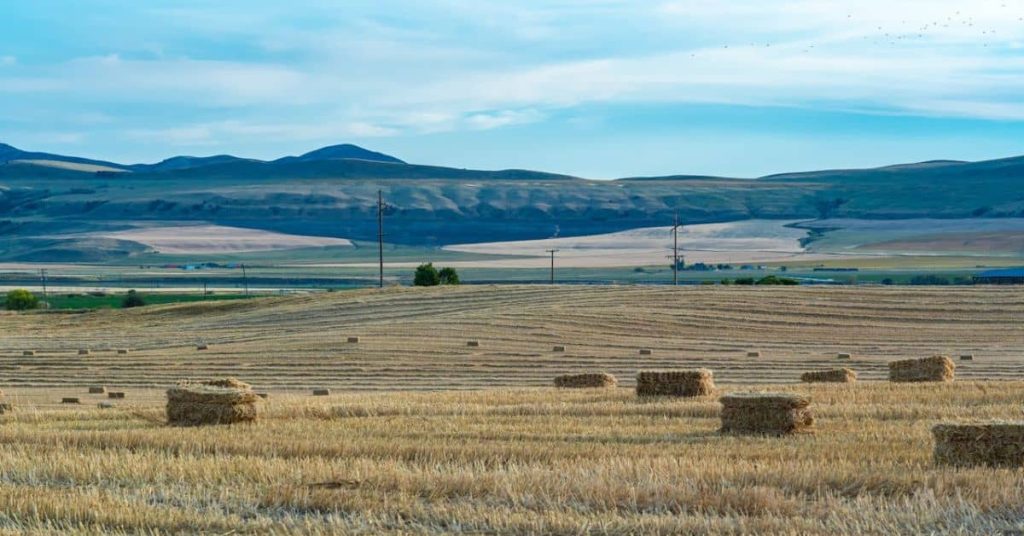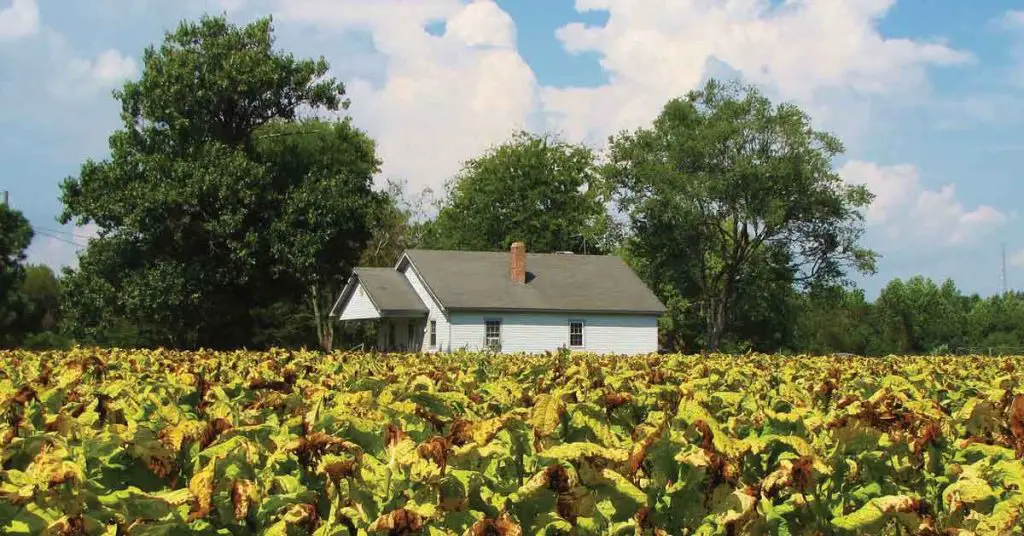Why Start Homesteading in Utah?
It started with a rattling faucet and a $300 water bill. That’s what finally pushed my neighbors in Box Elder County to dig into off-grid living. They’d been talking about chickens for years, maybe planting a few fruit trees, but that one bill made everything feel urgent. Utah’s beauty is wild and open, but its resources, especially water, can be tough to manage.
If you’ve ever stared at a bare patch of land and wondered if you could really make something grow, you’re in the right place. Homesteading in Utah comes with its own mix of rewards and surprises. The high desert isn’t always forgiving, but for folks with grit, it offers something a little deeper: space to build, room to breathe, and a chance to live on your own terms.
In this article, we’ll walk through what homesteading actually looks like here in Utah. You’ll get:
- Real-life tips for gardening in zone 5b
- What it takes to raise chickens or keep bees legally
- Honest answers about land, water, and what you can (and can’t) build
- A look at affordable options like Riverbed Ranch
- Online groups and local spots where you can find support
This isn’t a dream-board version of homesteading. It’s the kind where your compost freezes in January and your tomatoes fry by August. But it’s also the kind where neighbors trade eggs for squash and a backyard can slowly become a full-blown homestead.
So, if you’ve been wondering whether it’s worth it to try, keep reading. You’re not alone.
Why Utah Draws First-Time Homesteaders
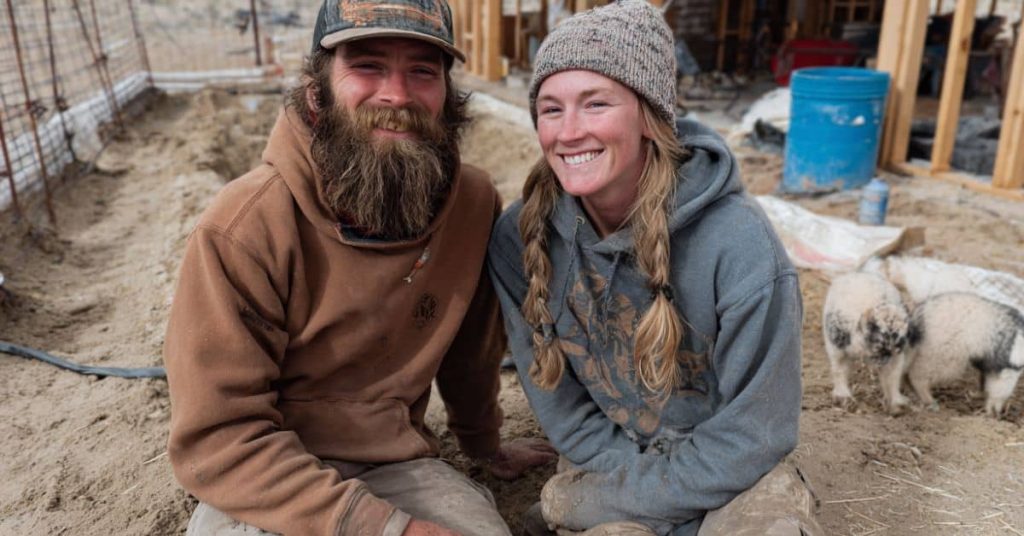
There’s something about Utah that makes folks pause and think, “Could I actually do this?” Maybe it’s the big sky. Maybe it’s the quiet. Or maybe it’s the chance to finally stop renting and start planting. Whatever the reason, more and more people are trying out homesteading in Utah, especially those who are new to it all.
Homesteading in Utah for Beginners
Most folks don’t start with 40 acres and a tractor. They start with a little backyard, a few raised beds, maybe a flock of hens if the city allows it. That’s exactly how Jamie, a single mom in Payson, got going. “We started with herbs in pots,” she told me. “Next thing I knew, we had a hoop house made out of old PVC pipe and a Craigslist greenhouse.”
What draws people here? For starters:
- Utah land is cheaper than in many other western states, especially in places like Duchesne, Sanpete, and Box Elder counties.
- Zoning laws outside the cities are often more flexible.
- The state has plenty of sun, which is great for gardens and off-grid solar setups.
I wasn’t sure it would work when I started on just three-quarters of an acre outside Moab. The soil was hard, the wind was worse, and I knew nothing about growing in a high desert. But it worked, mostly through trial and error and a lot of YouTube searches late at night.
If you’re starting small, here’s what’s helped other Utah beginners:
- Use raised beds filled with composted soil. The native dirt can be tough.
- Focus on crops that grow fast; like radishes, lettuce, and bush beans.
- Join a local Facebook group or attend a class through USU Extension.
Further Reading: Mountain West Ranches – Micro Homesteading Tips
And don’t worry if your first season feels a little chaotic. That’s how most of us begin.
Homesteading in Utah for Free
Free doesn’t mean easy. But with a bit of grit and a good community, you can start homesteading in Utah without a lot of money upfront.
When my neighbor Eric bought a rundown camper and parked it on his cousin’s land near Fruitland, all he had were a shovel, some salvaged pallets, and a handful of seeds. Two years later, he’s got a cabin framed, goats in a pen made from old fencing, and a rainwater catchment system that gets him through most of the year.
Here’s what helped folks like Eric and others get going on the cheap:
- Craigslist, Freecycle, and Facebook Marketplace for used materials
- Trading labor for tools or starter chicks
- Community garden plots if you’re in a town and don’t own land yet
I’ve seen people turn a broken-down shed into a chicken coop with nothing more than elbow grease and scrap lumber. It’s not fancy, but it works and that’s the point.
So if you’re asking yourself, “Can I afford to try homesteading in Utah?” the answer might be yes. Not because it’s all laid out for you, but because you can build slowly, using what you’ve got.
If you’re just starting out, remember: every homesteader was once a beginner. Whether you’re planting your first tomato or trying to fix a leaky coop roof, Utah has the space and the people to make it possible.s
Legal Realities of Homesteading in Utah

If you’ve ever typed “Is it legal to homestead in Utah?” into Google at 2 a.m., you’re not alone. A lot of folks assume Utah still hands out free land like it’s 1880. I used to think the same thing. Turns out, homesteading in Utah today is more about land rights, zoning, and a thing called the homestead exemption.
The good news? Yes, it’s legal to live off the land here, given you do a little homework first.
Is It Legal to Homestead in Utah?
The short answer: yes. But not in the old-fashioned, “show up and claim 160 acres” kind of way.
The term “homesteading” gets tossed around a lot, especially in off-grid circles. But what the state of Utah means by “homestead” has more to do with protecting the house you live in, not giving land away.
Utah law allows homeowners to claim a homestead exemption, which shields part of your home’s equity from creditors if things go sideways financially. As of the last update, that cap was $42,000 for individuals or $84,000 for couples. It’s helpful, but it doesn’t mean you get land for free or that you can build wherever you want.
Here’s what worked for me when I was getting started:
- I called the county recorder’s office to ask about zoning.
- I asked a local title company about how the exemption worked.
- I made sure my land could legally be used for residential purposes before moving anything onto it.
Further Reading: FindLaw – Utah Homestead Law
It sounds dry, but checking these things early saved me from building a shed on a plot that didn’t allow full-time residence. One guy I know in Sanpete County had to tear down a tiny home because he didn’t pull a permit first.
So before you buy land or move your fifth wheel onto that patch of sagebrush, ask yourself:
- Is this land zoned for what I want to do?
- Does the county allow off-grid living?
- Can I get water and septic approval here?
You don’t have to hire a lawyer, but you do need to ask the right questions.
Who Qualifies for Homestead Exemption in Utah?
The homestead exemption is mostly for folks who already own their primary home or trailer. You don’t need to be totally off-grid or on acreage. Even someone in a townhouse can file it.
To qualify, you usually need:
- Proof of ownership (a deed or title)
- To be living there full-time (no vacation land)
- To file a declaration with the county recorder
I wasn’t sure it would matter for us at first, but after talking with a financial counselor in Provo, we filed the exemption on our home. It was free, and it gave us peace of mind.
If you’re not sure whether your place qualifies, call your county recorder. They’ll walk you through it. Most have a simple form you can print online or fill out at the office.
This law won’t help you “get” land, but it can help you protect what you’re building, especially if times get tough or unexpected bills hit.
Quick Tips Recap:
- Homesteading in Utah is legal, but there’s no free land program.
- The homestead exemption helps protect your equity, not your lifestyle.
- Always check zoning, especially on rural land or co-op lots.
- Don’t assume “off-grid” means “no rules.”
Legal stuff isn’t fun, but it’s part of the foundation. And when you’re trying to build a life off the land, you need a solid place to start.
Land Access: Buying, Zoning, and Co-op Opportunities
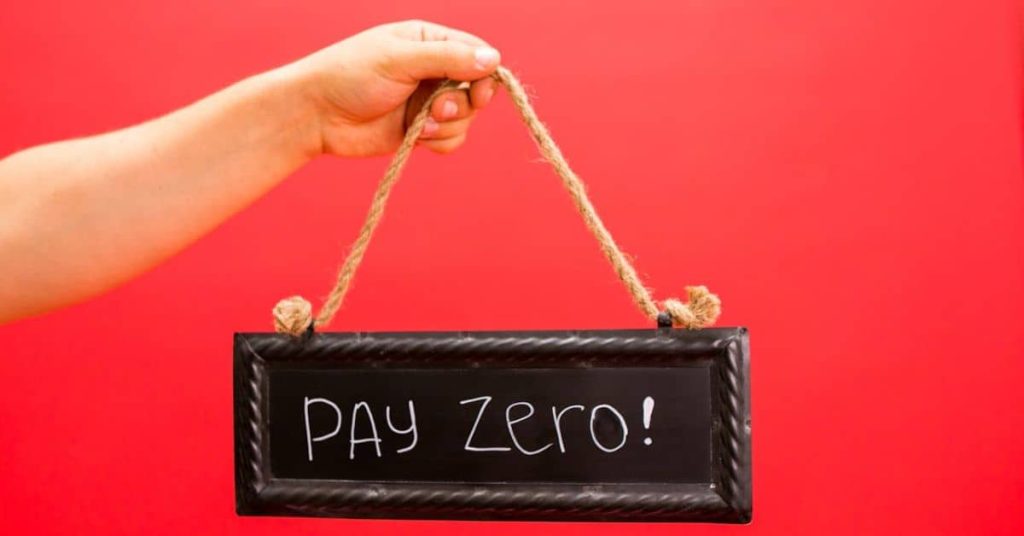
Finding the right piece of land is usually the first big step in homesteading in Utah. It’s also where a lot of folks hit their first wall. Between old myths, zoning restrictions, and confusing real estate listings, it’s easy to feel overwhelmed.
The good news? You don’t need 40 acres and a mule. But you do need to understand what kind of land you’re buying and what you’re legally allowed to do on it.
Is There Free Land for Homesteading?
A lot of people still think Utah is full of free plots just waiting to be claimed. I used to believe that too, until I actually started calling around. Turns out, the Homestead Act was repealed decades ago. The federal government isn’t handing out land anymore, and Utah isn’t either.
That said, you might find:
- Private landowners willing to lease, swap, or sell dirt cheap
- Church or family land passed down or subdivided informally
- A co-op or community model where land is “earned” by labor or time
Still, don’t expect free. Expect creative.
How to Get Free Land in Utah
The closest I’ve seen to a “free land” setup in Utah is Riverbed Ranch, out in Juab County. It’s a co-op model where you buy into a 2-acre parcel and help build out the infrastructure alongside other members. It’s not free, but it’s more accessible than buying a farm outright.
There’s a trade-off, though. You’ll need sweat equity, patience, and a tolerance for group decision-making. I visited last spring. The vibe reminded me of early homesteading meetups; folks building cabins, troubleshooting solar, helping each other dig trenches.
If you’re someone who likes to work with your hands and doesn’t mind dirt roads and shared labor, it might be a fit. If not, there are other paths.
Riverbed Ranch Utah
This isn’t your average HOA. Riverbed Ranch is organized as an agricultural co-op with shared infrastructure. Members help build roads, wells, and shared buildings. In return, they get access to land and a growing off-grid community.
A few things to know:
- You’ll need to commit to living there full-time within a set period
- There are build-out requirements and design guidelines
- It’s still evolving; some services aren’t fully up and running yet
I wasn’t sure it was my style, but I’ll say this: they’ve got community potlucks, earthbag root cellars, and a real drive to live differently.
Riverbed Ranch Utah Map
If you’re curious about the layout, the co-op shares regular updates on their site with maps showing lot divisions, road plans, and water lines. That helped me understand how the community is coming together piece by piece.
Homesteading in Utah for Sale
For folks who want more independence or a simpler purchase, buying raw land is still possible, especially in places like Duchesne, Emery, or Millard counties. But buying land in Utah isn’t always straightforward.
Here’s what helped me:
- Ask the seller exactly what zoning allows. Some listings claim “agricultural” but ban livestock.
- Double-check access. Some cheap land is landlocked or needs legal easement.
- Call the county recorder or planner. They’ll tell you what’s legal.
I almost bought a gorgeous parcel near Helper, but the access road crossed another property with no easement. Dodged a headache there.
Can You Live on Recreational Land in Utah?
Short answer: not usually. Recreational zoning often means you can camp, maybe bring in a trailer seasonally, but you can’t legally live there full-time. You also may not be able to build, drill a well, or keep animals.
This is where folks get burned.
County rules vary a lot. For example:
- San Juan might let you live in a yurt temporarily
- Utah County is stricter on septic and power access
- Sevier allows more flexibility with temporary structures
Always call the planning and zoning office before you buy. I know that’s not fun, but it saves months of stress later.
The land is out there. It may take some digging, a few phone calls, and possibly a visit or two out on dirt roads. But if you’re serious about homesteading in Utah, the right parcel can be found and maybe even shared.
Water, Soil, and Growing in Utah
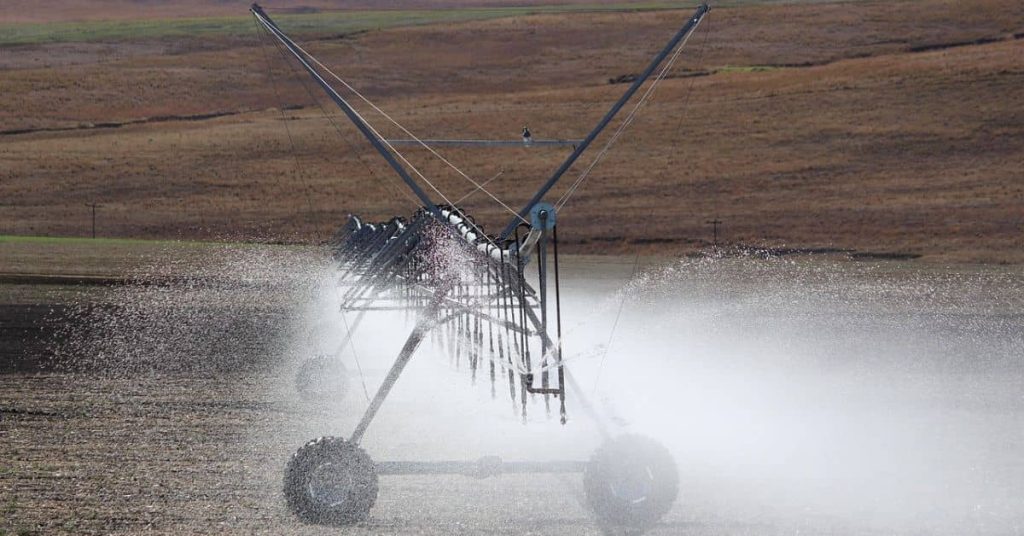
One thing folks learn pretty quick when they start homesteading in Utah, the land isn’t always as friendly as it looks. It’s dry, the soil can be rocky or salty, and the growing season feels like it ends just as you’re getting the hang of things. But it’s not impossible. With a few local tricks and a bit of patience, you can grow a whole lot more than just tumbleweeds.
Utah Homesteading Zone 5b Garden Tips
Most of Utah falls into USDA Zone 5b, though some spots creep into 6a or drop to 4. That means your growing season is short. In my place near Nephi, the last frost hits around mid-May, and the first one can sneak in by mid-September. You’ve got maybe 120 days if you’re lucky.
What worked for me:
- Start seeds indoors in March. Tomatoes, squash, and peppers need a head start.
- Use cold frames or low tunnels to stretch your growing window.
- Focus on hardy, fast growers like bush beans, kale, carrots, and zucchini.
I wasn’t sure raised beds would matter much, but building them with sun-warmed soil made all the difference. Plus, I didn’t have to battle the clay-packed ground.
Mulch is another must. A thick layer of straw or wood chips helps hold in moisture, which is precious in Utah’s dry air. A neighbor in Spanish Fork swears by covering her entire garden in old sheep wool scraps from a local rancher; keeps the weeds down and the soil cool.
Utah Rainwater Harvesting Rules
Can you collect rainwater in Utah? Yes. But there’s a catch.
Homeowners can legally harvest rainwater, but there are limits. You’ll need to register your system if you’re storing more than 100 gallons. Most folks I know keep a few 55-gallon barrels under their gutters and call it good.
Here’s what you can do:
- Collect up to 2,500 gallons if it’s used on the same property
- No permit needed for two barrels under 100 gallons total
- Registration is free and simple through Utah’s Division of Water Rights
I installed two barrels off our shed roof and used that water for the garden all summer. I wasn’t sure it would be enough, but we only had to supplement once in July. It’s not a perfect solution, but it helps.
And if you’re in a place without a roof (like a yurt or tent site), you can still catch water with a tarp frame and gutter pipe, just make sure your county doesn’t have added restrictions.
Utah Water Rights for Homesteaders
This is where things get tricky. In Utah, water is owned by the state. If you want to use more than a little rainwater or access groundwater, you’ll need a water right. That applies to wells, irrigation, and even piping creek water.
Some land listings claim “water available,” but that doesn’t always mean legal access. I almost bought a parcel near Vernal until I found out the seller had no water rights, it would’ve taken years (and a lot of money) to get them.
Here’s what helped me sort it out:
- Ask for the water right number when viewing land.
- Use the Utah Division of Water Rights website to verify it.
- If you’re buying undeveloped land, assume you’ll need to haul water at least at first.
Further Reading: Utah Division of Water Rights
One woman I met near Salina had her water hauled in by a neighbor for the first two years while she worked through a shared well agreement. It wasn’t easy, but she made it work with a 275-gallon tote in the back of a pickup.
Growing food and managing water in Utah isn’t effortless, but it is possible. You’ll learn to work with what the land gives you and sometimes, that’s half the fun. Whether you’re deep in the red rock or tucked up near the Uintas, a little planning goes a long way when you’re homesteading in Utah.
Raising Animals on a Utah Homestead
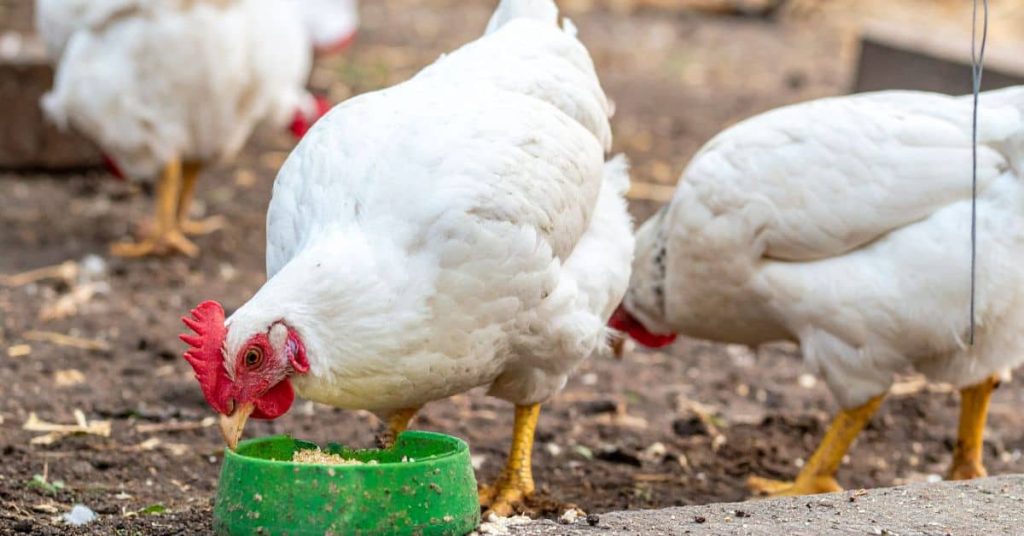
When folks ask me what makes a homestead feel real, I always say the animals. Whether it’s the sound of hens fussing in the morning or the calm buzz of bees on the alfalfa, animals bring life to the land. But homesteading in Utah does have its quirks when it comes to livestock and pollinators.
The dry air, tricky zoning, and winter temps make planning ahead essential but don’t let that scare you off. With the right setup, animals can thrive here just fine.
Is Utah Good for Chickens and Bees?
Utah’s dry climate has its pros and cons. For chickens, it means fewer parasites and less mud. But the summers are hot, the winters are cold, and the wind can really howl. If you’re raising chickens here, you’ll need to plan for shade in the summer and solid insulation in the winter.
Here’s what worked for me:
- I built my coop with double walls and packed straw in between.
- Used hardware cloth instead of chicken wire to keep raccoons and skunks out.
- Hung burlap over the run during July to give them shade.
Bees, on the other hand, actually like the dryness; less mold, fewer diseases. But they do need water nearby and shelter from harsh afternoon sun. I wasn’t sure I’d have any luck in my dusty corner of Sanpete County, but my first hive made it through winter with a sugar brick and some burlap insulation.
Local beekeeper Marissa T., who teaches workshops in Salt Lake, told me, “The trick is to block the wind and let them get morning sun. Bees don’t need much, but they hate being cold and damp.”
Utah Beekeeping Classes
If you’re new to beekeeping, I highly recommend taking a class before diving in. There are several great programs in Salt Lake and along the Wasatch Front that walk you through everything from setting up your first hive to harvesting honey without wrecking your comb.
These classes usually cover:
- Hive equipment and setup
- Utah bee diseases and how to treat them
- Legal registration and hive inspections
- Overwintering tips for high elevation
Further Reading: Utah Department of Agriculture – Bees
Most classes run in the spring and fill up fast, so it’s good to get on a waitlist early. I took mine through a local extension group and came home with enough knowledge to keep my bees alive through their first real snow.
Beekeeping Rules from Utah Department of Agriculture
Beekeeping in Utah isn’t just a hobby, it’s regulated by the state. That might sound intimidating, but it’s mostly for the bees’ own good. The Utah Department of Agriculture requires all beekeepers to register their hives, even if you’ve only got one.
Registration helps with:
- Disease tracking
- Notification if pests or outbreaks are nearby
- Mapping hive distances to avoid overcrowding
When I started, I wasn’t sure if I needed to bother with it. But after seeing a mite outbreak a few towns over, I was glad I got on the radar. The annual fee is small, and inspectors are actually really helpful.
You’ll also need to keep a minimum distance between your hive and nearby property lines. Most places recommend at least 25 feet, with a barrier like a fence or hedge if you’re close to neighbors.
Chickens for Sale in Utah
Finding chicks or pullets in Utah isn’t hard if you know where to look. Facebook Marketplace, local farm supply stores like IFA, and even neighborhood bulletin boards are full of listings, especially in the spring.
Here’s what I’ve learned:
- Buy from someone local if possible. Chicks raised in Utah are already used to the climate.
- Check for NPIP certification if you’re buying a large batch.
- Ask about breed. Cold-hardy hens like Australorps or Orpingtons do better in high-altitude areas.
One year I bought 10 pullets from a seller in Lehi. They were raised in a barn, so when I brought them to my open-air run, they got stressed. After that, I started asking sellers about how they house their birds, it made a big difference in how well they adapted.
Animals are a big part of homesteading in Utah, but like everything else out here, they come with their own learning curve. Give them what they need, warmth, shade, clean water, and they’ll pay you back in eggs, honey, and maybe even a little peace and quiet at the end of a long day.
Adapting to Utah’s Tougher Conditions

If you’ve lived through a February in central Utah, you know this state doesn’t mess around with weather. Whether it’s the sudden freeze in May or a surprise foot of snow in October, homesteading in Utah means learning to work with the climate instead of fighting it.
But with the right planning, and a few trial-and-error lessons, you can build a setup that handles the wild swings without too much stress.
Utah Winter Homesteading Survival Tips
Winters in Utah aren’t just cold, they’re dry, windy, and long. My first year off-grid, I figured a heat lamp and a few blankets would keep the chickens comfy. That worked fine until the power went out during a windstorm and the coop dropped to 9 degrees overnight.
Here’s what worked better after a few rough lessons:
- Wrap water lines with pipe insulation and heat tape. Even buried lines can freeze when it dips below zero.
- Build a greenhouse with passive solar in mind. South-facing windows and thermal mass (like black barrels of water) help retain heat.
- Skip the electric heaters. A rocket stove or propane heater is more reliable off-grid.
A neighbor in Fillmore told me she keeps her chicken waterers inside the coop on rubber pavers, which keeps them from freezing as fast. I tried it last winter, and sure enough, it added a couple hours before everything turned solid.
If you’re heating a cabin or tiny home, consider a wood stove with a backup propane heater. I wasn’t sure I needed both, but during a power outage last January, I was real glad I had options.
What Elevation Is Too High to Homestead in Utah?
Utah’s a tall state. Some folks are gardening down near 4,000 feet, others are clearing snow at 8,500. And that elevation difference changes everything, especially when you’re trying to grow food or raise animals.
Anything above 6,000 feet means:
- Shorter growing season (sometimes less than 90 days)
- Colder nights, even in June and July
- More snow, wind, and frost risk
I homesteaded at 6,300 feet for two seasons outside of Fairview. I had to start all my seeds indoors and rely on a lot of cold-hardy crops. My tomatoes barely ripened unless I used black plastic mulch to warm the soil.
If you’re shopping for land, ask yourself:
- What’s the elevation? (You can check with free topographic maps online)
- Does the property have southern exposure for winter sun?
- Is there wind shelter from trees or hills?
A couple I met near Boulder grow nearly everything in a geodesic dome. “It’s the only way we could keep greens going past September,” they told me. And they weren’t exaggerating, the wind up there will rip plastic off your hoop house in an hour if it’s not secured right.
So is there a spot that’s “too high” to homestead in Utah? Maybe not, but above 7,500 feet, you’re going to spend a lot more time problem-solving.
Living in a place like Utah tests your systems and your patience. But that’s part of what makes homesteading in Utah satisfying. You earn your wins. Whether it’s thawing a frozen pipe with a hair dryer or finally growing carrots that don’t bolt in June, every small success feels like proof you belong on the land.
Finding Community and Ongoing Support
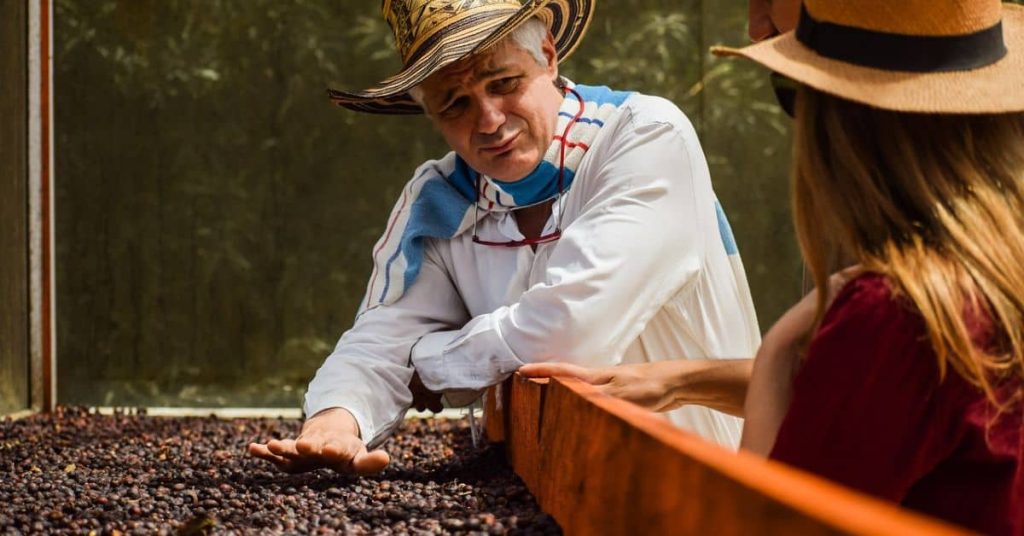
When you’re new to homesteading in Utah, it’s easy to feel like you’re doing everything alone. The wind knocks down your greenhouse, the goats won’t stay in the fence, and your well pump starts acting up right when you finally sit down to eat.
That’s where community makes all the difference.
Whether you live in the middle of nowhere or a small neighborhood outside Logan, there’s a whole bunch of folks out there learning the same things and solving the same problems and many of them are just a click or short drive away.
Utah Homesteading Facebook Group
I joined the Utah Homesteading Facebook group a few years ago when I couldn’t figure out what was eating my apple trees. Within an hour, someone suggested codling moths and showed me how to make a simple trap from a milk jug. Worked like a charm.
Why it’s worth joining:
- Folks post garden questions, water rights info, and livestock troubleshooting
- You’ll find used tools, chicken tractors, and solar panels for sale
- The search bar is pure gold, just type in what you’re dealing with
What worked for me was checking the group early in the morning, when the long-time homesteaders were most active. That’s when I got the best advice, like how to keep bees from drowning in my chicken waterers.
Utah Backyard Homesteading
Not everyone in Utah has acreage. A lot of homesteaders work with what they’ve got, even if it’s a backyard in Ogden or a quarter-lot in West Valley. That’s where the Utah Backyard Homesteading crowd shines.
You’ll see folks growing:
- Dwarf fruit trees in containers
- Vertical gardens on fences
- Chickens in moveable runs that double as lawn mowers
One Salt Lake family turned their entire front yard into a veggie patch. The city gave them some grief at first, but they worked out a plan that included raised beds and wood-chip walkways, and now it’s become a bit of a neighborhood conversation starter.
If you’re wondering, “Can I homestead without moving to the middle of nowhere?”, yes. And this group proves it every day.
Reddit Threads on Homesteading in Utah
Reddit might not seem like a homesteader hangout, but it’s full of useful threads, especially if you know how to search. I wasn’t sure about using it at first, but when I needed advice on passive solar heating in winter, that’s where I found some of the clearest info.
Start with the Homesteading in Utah tag or keyword, then look for threads with lots of upvotes and comments. You’ll find everything from:
- DIY root cellar builds
- Solar power setups
- Dealing with rocky soil at high elevation
r/Utah Homesteading
This specific subreddit dives deeper into Utah’s challenges. Folks share tips on everything from foraging wild asparagus to registering water rights. I found a thread about keeping ducks through a Uintah County winter that helped me rethink how I build wind blocks near my coop.
It’s not always polished, but it’s real and that’s what makes it helpful.
Permies Utah Forum
If you’re serious about finding land or diving into permaculture, the Permies Utah forum is a must-read. I stumbled across it when I was researching off-grid water systems and wound up bookmarking a dozen posts about building swales and creating firebreaks with native plants.
What it’s good for:
- Land listings from folks who understand homesteading
- Advice on forested lots and dryland water harvesting
- Updates on state-level issues like new composting rules or wildfire planning
Someone posted a thread last year about using wool waste as mulch. I tried it under my garlic beds and had the best spring crop yet.
Best Spots to Homestead in Utah
If you’re asking, “Where are the best spots to homestead in Utah?” you’re not alone. That question pops up in every group, and the answer depends on your priorities.
Here’s where folks tend to recommend:
- Duchesne County: Affordable land, relaxed zoning, but dry and windy
- Sanpete County: Good community support, moderate elevation, still rural
- Wasatch Back (like Heber, Midway): Higher cost, but better water and growing season
I ended up in Sanpete after looking at listings for over a year. It wasn’t perfect, but the community helped me feel less like I was on my own. And that’s made all the difference.
Homesteading is rarely easy, but you don’t have to do it alone. With the right folks around you, online or in person, you’ll figure it out one fence post, compost pile, or hive inspection at a time. Homesteading in Utah is tough, but the people here know how to help each other make it work.
What It’s Really Like to Start Homesteading in Utah
I won’t sugarcoat it, homesteading in Utah is tough. The wind snaps fence lines, water rights get tangled, and more than once I’ve found myself staring down a frozen spigot at 6 a.m. wondering what I got myself into. But every year, something grows. Every season, I learn one more trick. And slowly, this raw land starts to feel like home.
If there’s one thing I’ve learned, it’s that doing this here, through short growing seasons and county regulations, teaches you patience. You find out what matters, what doesn’t, and just how far a few chickens, some saved seeds, and a couple of solid neighbors can take you.
So if you’re still wondering whether homesteading in Utah is right for you, here’s what I’d say: try something small. A garden bed. A water barrel. Maybe join a local group and ask what’s worked for them. You don’t need to have it all figured out. You just need to start.
I’d love to hear your story. Drop a comment below and tell me what part of homesteading you’re curious about or what’s working for you out there in the wilds of Utah. And if you found this helpful, share it with a neighbor who’s been eyeing those seed catalogs.
Curious how Utah compares to nearby states? Check out Homesteading in Nevada, Homesteading in Idaho and Homesteading in Colorado for more real-world tips.
Is it legal to homestead in Utah?
Yes, homesteading in Utah is legal, but don’t expect the state to hand you free land.
The legal term “homestead” in Utah usually refers to a homestead exemption, which helps protect your primary residence from certain creditors. You still need to buy or lease land, and you’ll have to follow local zoning laws for housing, water, and animals.
What worked for me: I filed a homestead exemption through the county clerk’s office. It gave me peace of mind knowing our small cabin was legally protected.
Can you live on recreational land in Utah?
Usually not full-time. Recreational land is meant for camping, seasonal use, or occasional RV stays; not permanent housing. Some counties are more flexible, but most won’t let you install a septic or get a mailing address there.
Before you buy, ask yourself:
Does this land have year-round access?
Is it zoned residential or agricultural?
Can I legally build a home or park a trailer full-time?
I almost bought a cheap plot outside Richfield, but the county planner said I couldn’t even drill a well there. Glad I checked first.
How to get free land in Utah?
There’s no state program for free land, but a few co-op communities offer affordable access in exchange for work or buy-in.
Riverbed Ranch, for example, lets members help build infrastructure while claiming a 2-acre plot. It’s not technically free, but it’s more doable than buying a big property outright.
Tip: Look for family land splits, church-owned properties, or private sellers open to rent-to-own deals.
Do I need a permit for bees or chickens?
Yes, in most places. If you’re in city limits, check local ordinances first. Many towns allow backyard hens but limit roosters. Beekeepers need to register annually with the Utah Department of Agriculture.
When I registered my first hive, the process was simple and free. Plus, it puts you on the state map so you get notified if there’s a nearby outbreak or mite issue.
What’s the best place to homestead in Utah?
That depends on what matters most to you: price, water, weather, or community.
Duchesne County has cheap land, relaxed rules, but less water
Sanpete County offers a strong homesteading community and moderate elevation
Wasatch Back is more expensive but good for gardening and access to services
When I was hunting for land, I wanted something off-grid but still within an hour of a feed store. Sanpete hit the sweet spot for us. But folks with solar setups and water tanks might do great out in the Basin.
Disclaimer: The information provided in this article is for general informational purposes only and is not intended to be a substitute for professional advice. The author of this article does not claim to be an expert in homesteading and the information provided should not be relied upon to make decisions about your own homesteading journey. Please do your own research and consult with a qualified professional before making any decisions about your homestead.
Share via:
Shaun Alexander is the main writer and editor for HomesteadingSimple.com. With a strong passion for homesteading and sustainability, Shaun has dedicated his life to learning and sharing information about a simple, fulfilling existence tied to the land. His expertise ranges from gardening and livestock management to off-grid living and DIY projects, reflecting the diverse skills necessary for a successful homesteading lifestyle. Shaun’s goal is to inspire and educate others about the possibilities of homesteading, whether in rural, suburban, or urban settings, and to provide practical advice and tips for both beginners and seasoned homesteaders. He believes in a future where more people return to their roots, embracing a life of self-sufficiency and harmony with nature.

